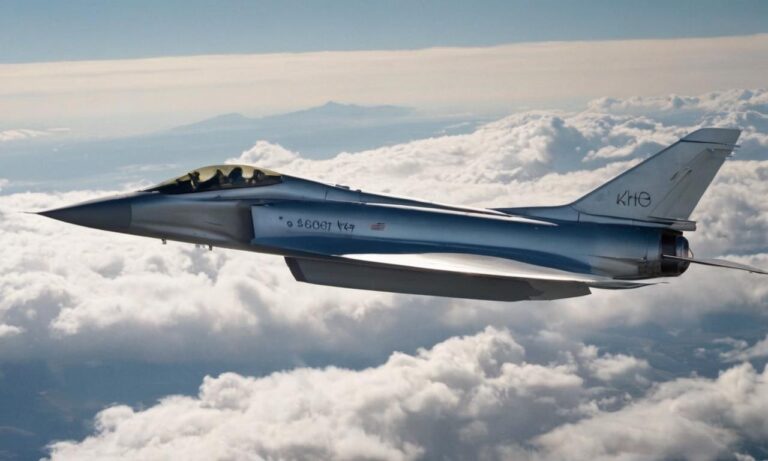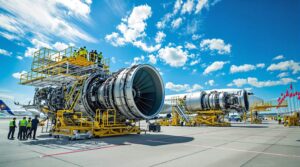Imagine witnessing the awe-inspiring sight of a supersonic aircraft streaking across the sky, breaking the sound barrier and creating a thunderous sonic boom. But what exactly triggers this phenomenon, and why does it occur?
The Science Behind Sonic Booms
At its core, a sonic boom is a shockwave produced when an object travels through the air at a speed faster than the speed of sound. In the case of supersonic aircraft, they achieve this by flying at speeds exceeding Mach 1, the speed of sound.
The speed of sound varies depending on several factors, including altitude and temperature. Generally, at sea level and a temperature of 20 degrees Celsius (68 degrees Fahrenheit), the speed of sound is approximately 343 meters per second (1,125 feet per second). Supersonic aircraft, such as fighter jets or the iconic Concorde, can reach speeds that surpass this threshold, resulting in the creation of a sonic boom.
When Does a Supersonic Aircraft Produce a Sonic Boom?
Contrary to popular belief, a sonic boom is not a continuous sound but rather a sudden and sharp noise caused by the shockwave. The boom occurs when an aircraft travels through the air and compresses the air molecules in its path. As the aircraft exceeds the speed of sound, the pressure waves generated coalesce into a single shockwave that reaches the ground, creating the distinctive sonic boom sound.
It’s important to note that a sonic boom is typically heard after the aircraft has passed overhead, as the shockwave trails behind the supersonic vehicle. The intensity of the sonic boom can also vary based on factors such as the size and shape of the aircraft, as well as atmospheric conditions.
Regulations and Impact
Given the disruptive nature of sonic booms, regulations are in place to manage their effects on the ground. In many countries, supersonic flight over populated areas is restricted to minimize the disturbance caused by sonic booms. However, advancements in aircraft design and technology continue to be explored to mitigate the impact of these shockwaves.
Research and development efforts are ongoing to create aircraft that produce softer, more tolerable sonic thumps or to develop methods that disperse the sonic boom energy, reducing its impact on the ground below.
In conclusion, a supersonic aircraft produces a sonic boom when it surpasses the speed of sound, creating a shockwave that reaches the ground and manifests as the iconic thunderous noise. While the impact of sonic booms has led to regulations and ongoing research, they remain an integral aspect of aviation history and technology.
The Impact of Sonic Booms on Wildlife
Beyond the effects on human communities, sonic booms can have significant implications for wildlife in the vicinity. The sudden and loud noise can disturb animals, leading to behavioral changes, disruption of ecosystems, and potential harm to sensitive species.
Wildlife Conservation and Sonic Boom Studies
Researchers are actively studying the impact of sonic booms on wildlife to develop strategies for wildlife conservation. Understanding how different species respond to these disturbances is crucial for implementing effective measures to protect biodiversity in areas frequented by supersonic flights.
To provide a glimpse into the potential effects, the following table summarizes some observations related to wildlife responses to sonic booms:
| Species | Response to Sonic Booms |
|---|---|
| Birds | Disruption of nesting behavior and feeding patterns. |
| Mammals | Increased stress levels and changes in movement patterns. |
| Aquatic Life | Disturbance in underwater environments affecting communication and navigation. |
Frequently Asked Questions
- Q: Are sonic booms harmful to the environment?
- Q: Can sonic booms cause damage to buildings?
A: While sonic booms themselves may not directly harm the environment, their impact on wildlife and ecosystems is a subject of ongoing research and concern.
A: In general, sonic booms do not cause structural damage to well-built buildings. However, they can be a source of annoyance to residents in the affected areas.
The Future of Supersonic Travel
As technology advances, there is a renewed interest in developing more sustainable and quieter supersonic aircraft. Innovations in propulsion systems and aerodynamics aim to minimize the environmental footprint of high-speed travel, paving the way for a future where supersonic flight may be more widely accepted and environmentally friendly.






